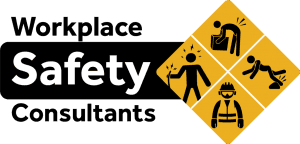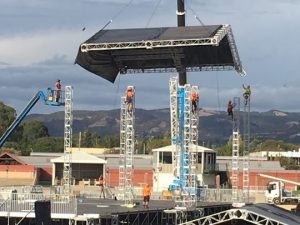Expert assistance for ensuring a safe and compliant workplace
A review can be conducted of your current health and safety processes to:
- Identify potential hazards or non-compliances and make recommendations for establishing a framework for the continual improvement of your safety management system.
- Identify the effectiveness of your current WHS management systems, processes and procedures.
- We can assist you in closing any health and safety gaps, review existing safety manuals, or alternatively develop a Work Health Safety WHS management system for you.
Take action to control health and safety risks in your business with expert advice from Workplace Safety Consultants. Contact us today.
Update your safety management system with our expert reviews and consultation services.
Hazard identification - Identifying all reasonably foreseeable hazards arising from work. Examples of hazards include manual handling tasks, the use of chemicals or the use of plants or equipment.
Risk assessment - A risk assessment involves considering what could happen if someone is exposed to a hazard and the likelihood of it happening. When controlling hazards in the workplace, the reasonably practicable approach should be used as a reference when risk assessments are being completed.
Reasonably practicable means what is reasonably able to be done in relation to ensuring health and safety, considering and weighing up all relevant matters, including:
- The likelihood of the hazard or the risk concerned occurring and
- The degree of harm that might result from the hazard or the risk
- What the person concerned knows, or ought reasonably to know, about:
- Hazard or the risk
- Ways of eliminating or minimising the risk
- The availability and suitability of ways to eliminate or minimise the risk
Keep your business safe! Schedule a health and safety review with our team of experienced professionals to identify potential hazards and non-compliance. Contact our team today.
Request a FREE Consultation
Improve Workplace Safety with Workplace Safety Consultants.
After assessing the extent of the risk and the available
Risk control - This means taking action to eliminate health and safety risks so far as is reasonably practicable, and if that is not possible, minimising the risks so far as is reasonably practicable using the Hierarch of Controls.
Review of controls - Undertaking an evaluation and review of the risk control measures is important to ensure effectiveness. Reviewing success and where things go wrong (incidents) is important to ensure the control measure implemented has been effective, or it may need more attention.
Hierarchy of Control:
Elimination – the most effective control measure is to
Isolate - this involves physically separating the source of harm from people by distance or using barriers. For instance, install guard rails around exposed edges and holes in floors or store chemicals in a fume cabinet.
Substitute - the plant (or hazardous parts of it) with a plant that is safer. For example, use a cordless drill instead of an electric drill if the power cord is in danger of being cut. Or a hazardous chemical that has the potential to cause injury or disease to be replaced with a less hazardous chemical.
Engineering - prevent access to the hazard, e.g. by guarding, isolating, modifying plant and equipment. An Engineering control can be the use of trolleys or the use of interlock switches, emergency stops, light curtains, etc.
Administration – training in policy and procedures or job rotation when it comes to hazardous manual handling tasks, etc.
PPE - issue personal protective equipment (e.g. clothing, footwear, goggles, hard hats, safety glasses etc.
Contact us today for expert recommendations for establishing a framework for continually improving your safety management system.

